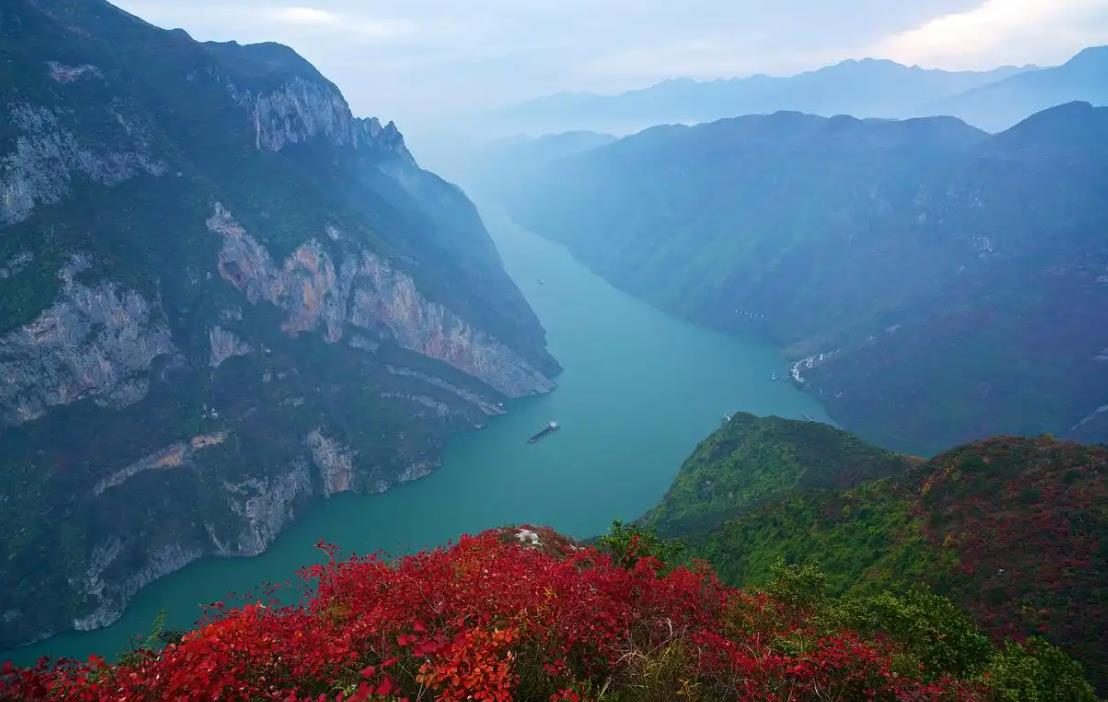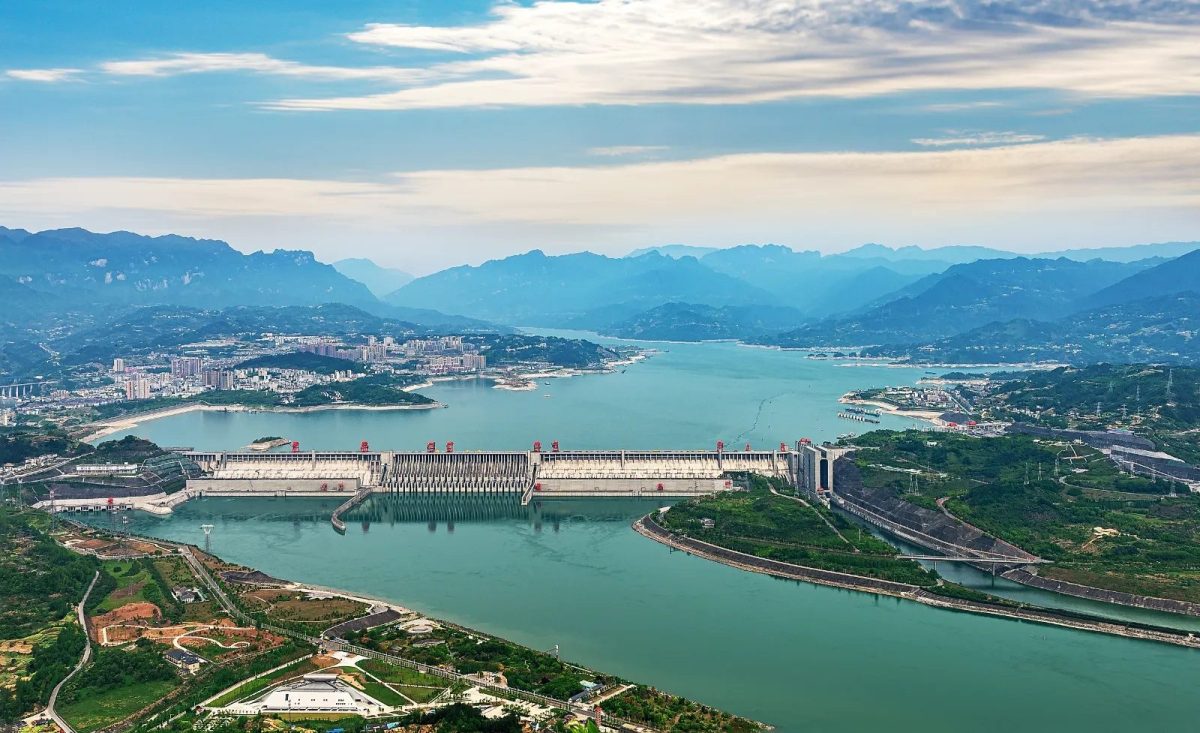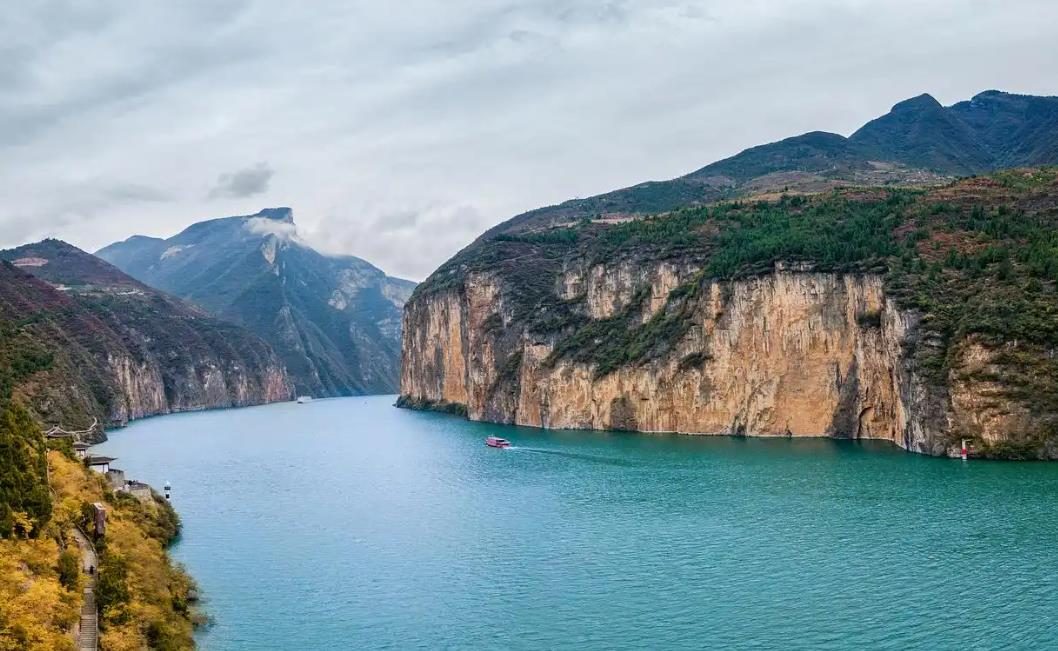The Three Gorges of the Yangtze River, a land of wonders where nature and humanity intertwine, is located in the hinterland of China, stretching from Baidi City in Fengjie County, Chongqing Municipality in the west to Nanjin Pass in Yichang City, Hubei Province in the east, with a total length of about 193 kilometers. It consists of three gorges, Qutang Gorge, Wu Gorge and Xiling Gorge, each of which attracts the world’s attention with its unique charm.

Qutang Gorge, as the prelude to the Three Gorges, is about 8 kilometers long and is famous for its “danger”. The cliffs on both sides of the gorge are as sharp as knives, and the river is narrow, so the scenery is shocking. Imagine the river rushing between the cliffs, as if the nature used the most majestic brush strokes to draw a thrilling picture scroll in this gorge.

Next is the Wu Gorge, about 45 kilometers long, which is famous for its “beauty”. On both sides of the gorge, twelve mountain peaks stand tall, surrounded by clouds and mist, just like a fairyland. In spring and winter, the river is clear, and the flowers on both sides of the river are beautiful; in the fall, the mountains are intertwined with gold and red, which is even more enchanting.

Xiling Gorge, with a total length of about 76 kilometers, is a perfect combination of “secluded” and “magnificent”. The canyon is deep, the river is swift, and the mountains and water are close to each other, forming a picture of breathtaking beauty. Here, you can feel the majesty and delicacy of nature, as if every drop of water and every stone is telling a thousand-year story.
The Three Gorges of Yangtze River is not only famous for its unique natural landscape, but also an important symbol of Chinese culture. It is the birthplace of Ba Chu culture, leaving behind numerous historical relics and legends. Throughout the ages, countless literati have left immortal poems and paintings here, adding to the cultural heritage of the Three Gorges. It is worth mentioning that the spectacular scenery of “Three Gorges of the Yangtze River – Kui Men” has been chosen as the scenic design on the back of the fifth set of Chinese RMB 10 yuan banknotes, which is a clear indication of its status in Chinese culture.
In addition to the natural scenery and cultural heritage, there are many historical and cultural sites and landscapes near the Three Gorges of the Yangtze River, such as the Ancient Trestle Trail, Hanging Coffins, the City of the White Emperor, the White Crane Leap, the Ghost City of Fengdu, and the Shibaozhai. These sites not only enrich the cultural connotation of the Three Gorges, but also provide more space for tourists to explore.

At the downstream of the Three Gorges of the Yangtze River stands the Three Gorges Dam, one of the largest water conservancy and hydropower projects in the world. With a total length of about 2.3 kilometers and a maximum dam height of 185 meters, this water conservancy project not only solves the flooding problem in the Yangtze River Basin, but also improves the efficiency of hydropower energy utilization and shipping conditions. The Three Gorges Dam has 32 generating units with a total installed capacity of 22,500 megawatts and an annual power output of up to 100 billion kilowatt-hours. Its completion is not only a milestone in China’s water conservancy history, but also an outstanding representative of global water conservancy projects.
If you want to experience the charm of the Three Gorges of Yangtze River in depth, a cruise is undoubtedly the best choice. You can start from Chongqing or Yichang, stopping at various attractions along the way to experience the nature’s ingenious workmanship and the profound heritage of human history. The Three Gorges of Yangtze River, as one of the famous tourist attractions in China, is attracting countless domestic and foreign tourists to explore and enjoy with its unique charm.
